
NEW YORK – Apothecary cabinets were commonly used by pharmacists and physicians in the 1800s as a means for storing medications, elixirs and herbs. Some even had nailed or secret compartments for storing poisons and hard-to-find spices. The many drawers were also handy for holding tools, such as a mortar and pestle, spoons and scales. The cabinets were as popular in Asia – maybe even more so – as in the Western culture, and many were quite attractive and beautifully made.
Apothecary cabinets gradually fell out of favor, as pills were mass-produced and the need for a pharmacist to mix the medicines declined. They remain popular today, however, with decorators and designers. But why? Why would something so utilitarian, with all those tiny cabinets, enjoy enduring appeal?
“Well, there’s your answer,” said Sarah Campbell Drury of Case Antiques in Knoxville, Tennessee. “Everybody needs storage, and these cabinets can be highly functional.”
Drury said the cabinets spanning many cultures are seen as desirable. “American, British or European examples with really good, authentic old paint – especially decorative painting – will bring a premium,” she remarked. “Collectors are always looking for cabinets in as good, original condition as possible, but great old paint can add significantly to the price. With Asian cabinets, ones made from rare and exotic materials, like Zitan wood, or decorated lacquer, are desirable.”
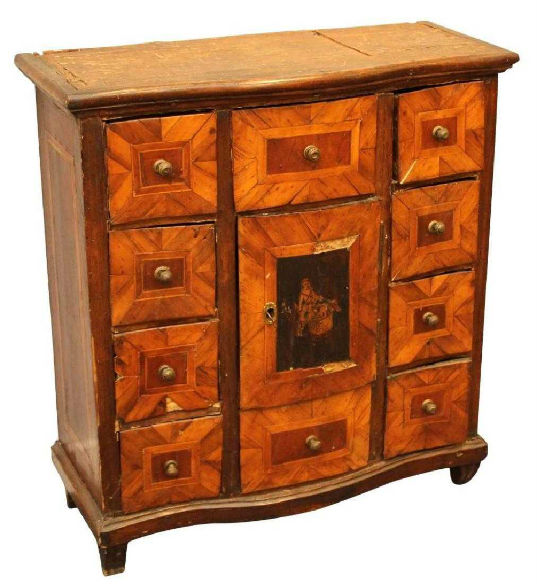
As with most antiques, Drury pointed out, great condition and interesting provenance can enhance a piece’s value. “Size matters to some extent,” she said, “as larger cabinets tend to be priced higher. But size can be a very subjective factor when it comes to value. Not everyone has space for a cabinet with 100 drawers but a 12-drawer cabinet with a fine surface can attract multiple buyers. The best of the best – look, condition and provenance – will sell well.”
Kevin Decker of William A. Jenack Estate Appraisers & Auctioneers in Chester, New York, said simplicity of design explains the enduring popularity of apothecary cabinets. “They can blend with any type of interior design, from traditional to modern,” he said, “plus they do offer storage for small, precious items.” He added, “We’ve sold mostly Asian examples, but have also sold some larger, Continental versions, too. I believe the Asian ones are more highly sought after.”
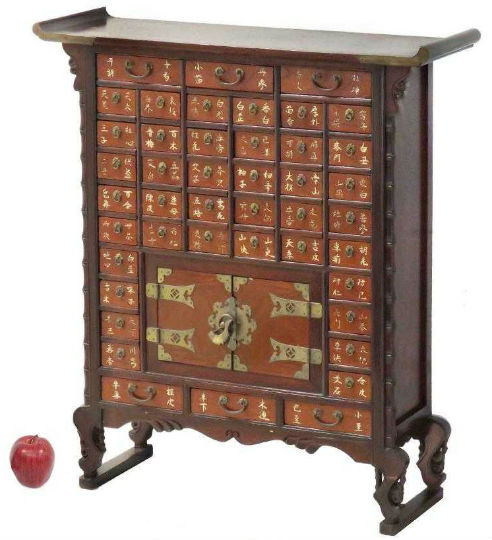
As for market demand for the cabinets, Decker said it’s fairly static. “From what I can gather the market will pretty much stay as it is for now,” he said. “’Brown’ furniture has been on the outs with most millennials, who favor Art Deco and Mid-Century trends in design. The clean lines and simple construction of apothecary cabinets reflect those design ideals and therefore make them a nice addition to that trend. Plus they’re functional, which is always a good thing.”
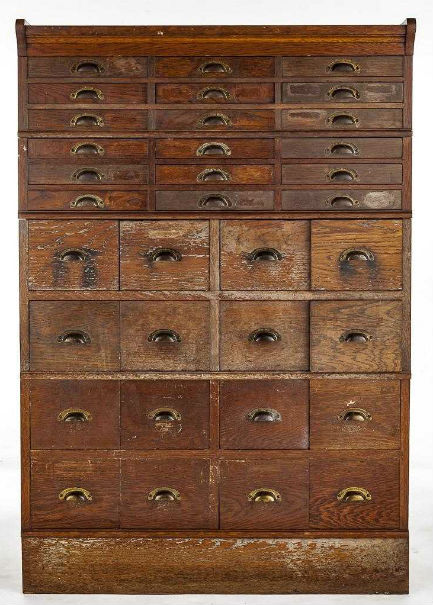
John D. Bottero of Thomaston Place Auction Galleries in Thomaston, Maine, said it is that very trait – their usefulness – that explains the appeal of apothecary cabinets. “Back in the Age of Enlightenment, the cabinets addressed the needs of herbalists, scientists and others to identify, classify and organize specimens and substances,” she said. “Today, they’re the perfect storage solution for a modern home. That explains why demand for the cabinets continues to be strong.”
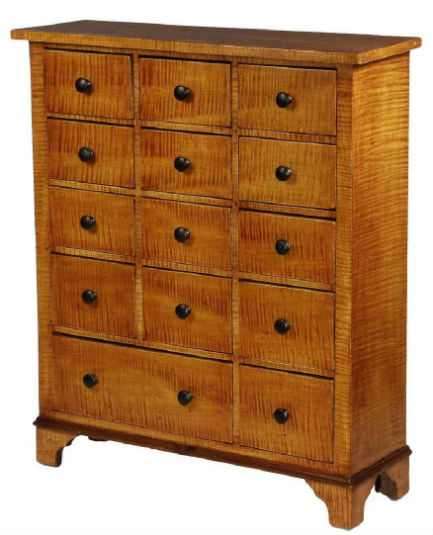
Bottero of pointed out that, historically, apothecary cabinets have been associated with people and places that were respected and central to the community. “This may have further elevated their appeal to the general public.,” she said, adding, “They come in a variety of forms and styles that appeal to any taste, be it American rustic, drug store, English herbalist or Asian.”
Deric Torres of Clars Auction Gallery in Oakland, California, said most of the cabinets he sees at auction are Asian, “although in September of last year we did sell an American example, circa 1860,” adding, “Many factors determine value, including condition, age and level of execution. The market for the cabinets has been stable in recent years and we see that trend continuing.”
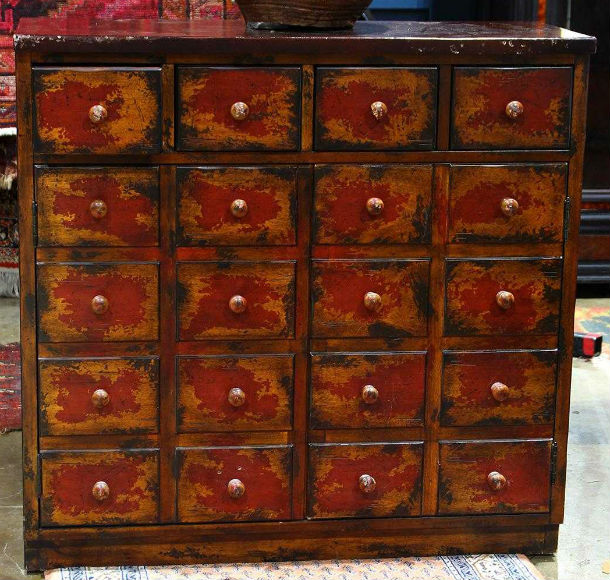
So where in the home would an apothecary cabinet be a good fit? Turns out – everywhere. Savvy homeowners and interior decorators have seamlessly incorporated the cabinets into today’s repurposing craze, in areas like the following:
- The bedroom. If the drawers are big enough, an apothecary cabinet can serve the same purpose as a dresser, since it can store socks, underwear and small clothing items. Also, if a mirror is placed over the cabinet, then it can serve very nicely as a makeshift vanity.
- The bathroom. Like the pharmacists of old, homeowners can use the small drawers to hold pill bottles, bandages, makeups, soaps and other essentials. The drawers also make it easy to sort items and keep them together. A caveat: moisture can damage older wood.
- Entryway or front hall. Most entryways are large enough to accommodate such a cabinet (even a big one) and homeowners can get added texture by sanding their piece or painting it the color they like. A bonus: it features enough storage space both inside and on top.
- The living room. Most living rooms can accommodate (or even require) a space divider, and an apothecary cabinet can serve that need beautifully (and aesthetically). Just pick the look you want (industrial vintage, rustic vintage, shabby chic) and go crazy and creative.
- The kitchen. Apothecary cabinets make perfect (and gorgeous) kitchen islands. Or, they can just do what they were originally meant to do: just store items, while looking textural and visually arresting. With the right paint or stain, it’s the perfect piece of kitchen kitsch.
- The office. The office? Yes, the office! An apothecary cabinet is something you can theme the décor of a home office around, plus it’s perfect for storing supplies like pens, staples, paper clips and other items. The top can be used for more storage, too, or a lamp.
# # #



